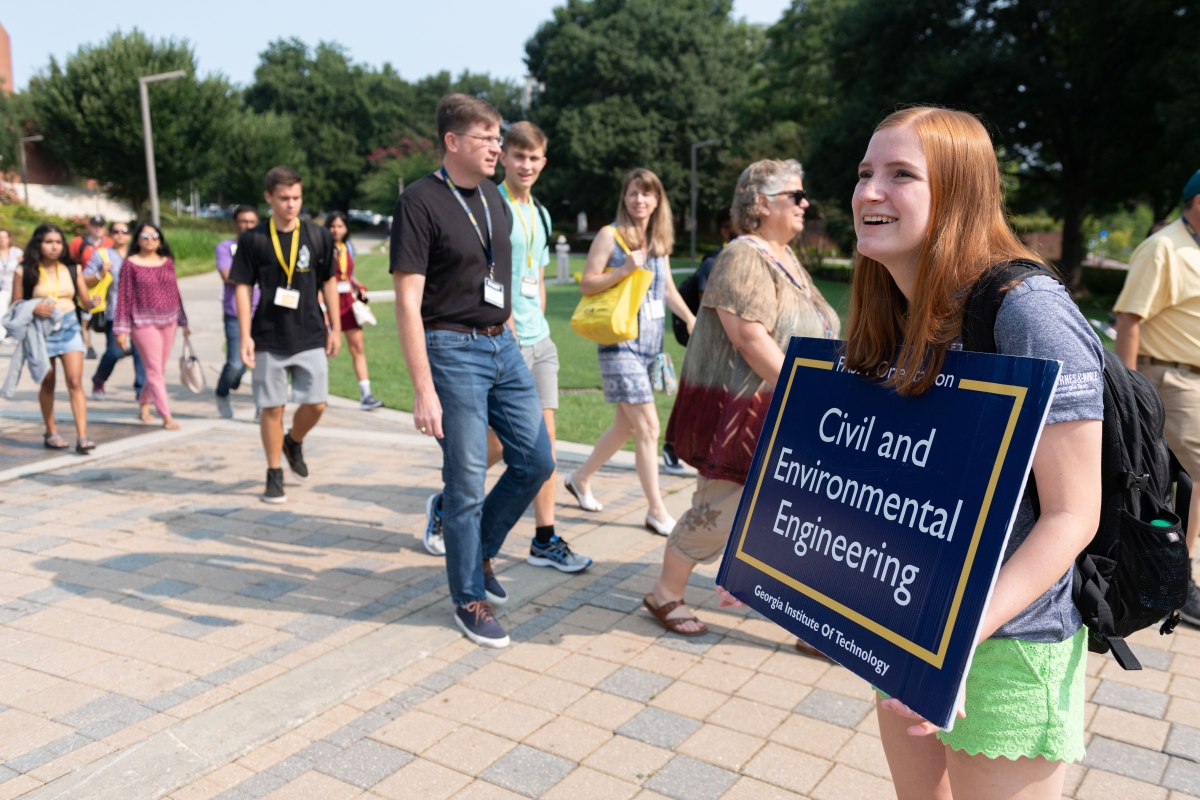Undergraduate Admissions
Bachelor's
Prospective students must apply through Georgia Tech Undergraduate Admissions. Georgia Tech exclusively uses the Common App for first-year admission, so you will need to create a Common App account before starting your application. Make sure to designate civil or environmental engineering as your intended major.
Read more about our undergraduate programs
Frequently Asked Questions can be found here.

BS/MS
The BS/MS degree allows undergraduate students who plan to pursue a master’s degree to begin taking graduate courses early and apply up to six credits toward both a bachelor’s a master’s degree. CEE undergraduate students are eligible to apply for this accelerated program after completing 30 semester-credit hours at Georgia Tech and appropriate progress in the degree program. Students must have a Georgia Tech GPA of 3.5 or higher for admission into the BS/MS program. Students should apply for the BS/MS program with at least 18 credits remaining in their bachelor’s degree program.
Please contact graduate student services to apply.
Graduate Admissions
 Master’s
Master’s
A minimum of 30 credit hours is required for the Master’s degree (30 credit hours of coursework for the non-thesis option, and 24 credit hours, plus 6 thesis hours, if writing a master’s thesis). Students must complete additional credit hours within their chosen academic group. Each academic group determines its own specific course options.
Apply online through Georgia Tech Office of Graduate Education.
PhD
The Ph.D. is primarily a research degree. The specific courses or program of study to be taken are established for each student by their faculty advisory committee. Doctoral students generally take approximately 50 credit hours of course work beyond the bachelor’s degree. All doctoral students must also complete a Minor Field of Study, consisting of at least 9 credit hours outside of CEE.
Graduate students apply to work with one of the six academic groups within the School of Civil and Environmental Engineering to serve as their academic home for the duration of their studies. Learn more about the research and faculty within each academic group.
Admission to the Ph.D. program does not constitute admission to candidacy for the Ph.D. degree.
Apply online through Georgia Tech Office of Graduate Education.
Application Information
To apply for graduate programs, prospective students must submit:
- Transcripts from a Bachelor's or Bachelor's equivalent degree
- Test Scores (see table below)
- Three letters of recommendation (Two Academic, One professional)
- Statement of Purpose
Personal Statement Guidance for Graduate Admissions
The personal statement, or statement of purpose, is your opportunity to clearly outline your academic, professional, and career objectives. Additionally, it is your chance to tell us why you wish to pursue these objectives through graduate studies in the School of Civil and Environmental Engineering at Georgia Tech. Your statement should discuss your background — including academic, research, and professional experience — as well as any unique specifics related to your qualifications for a graduate program. In short, your statement should address:
- Why you wish to attend graduate school;
- Why you wish to specifically attend the School of Civil and Environmental Engineering at Georgia Tech; and
- How our program can help you reach your long-term goals.
Test Scores
| MINIMUM SCORE | INSTITUTE CODE | DEPARTMENT CODE | |
|---|---|---|---|
| GRE | The GRE is no longer required. | ||
| TOEFL | 90 (minimum 19 in each subsection) |
5248 | 65 |
| IELTS | 7 (minimum section scores of: 6.5 reading, 6.5 listening, 5.5 writing, and 6.5 speaking) | ||
|
If you know your test scores when completing the application, note them in the space provided on the application form. We advise you to plan accordingly so that your official scores arrive before the application deadline. Official score reports will be sent directly from the testing agency to Georgia Tech. The TOEFL/IELTS is required for most international applicants. |
|||
